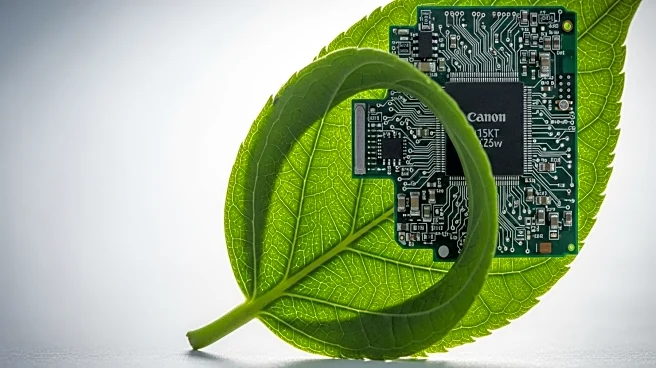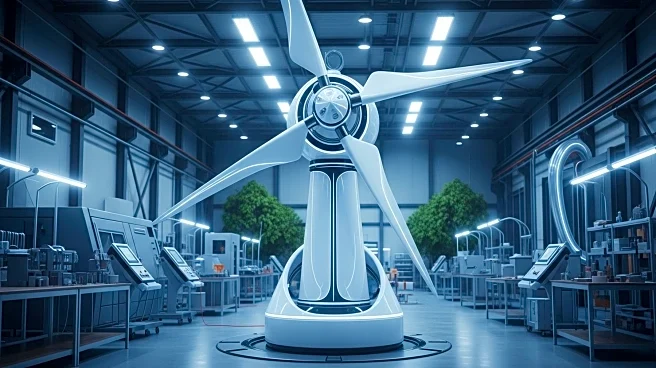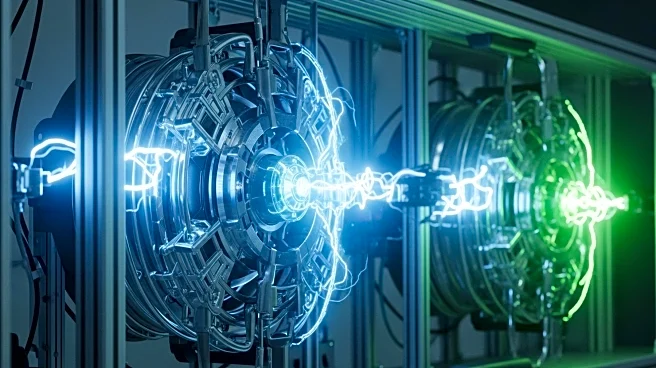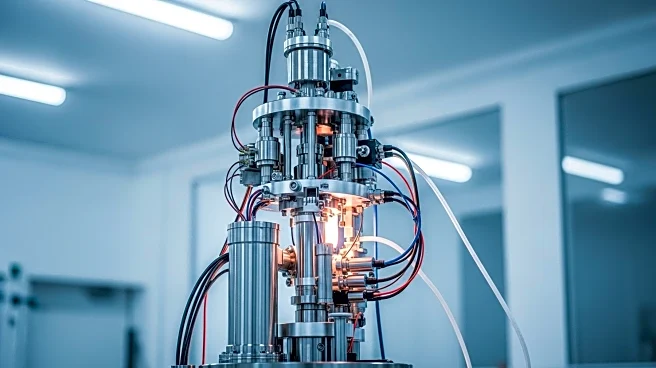What is the story about?
What's Happening?
Researchers are pioneering biohybrid systems that integrate living cells with advanced materials to enable sustainable chemical synthesis. These systems utilize energy sources like direct current electricity and sunlight to activate materials that transfer electrons to microbial cells, catalyzing the production of chemicals from carbon dioxide and water. The technology, known as microbial electrosynthesis (MES), offers a method for converting waste carbon into valuable products under mild conditions. The review highlights recent advancements in solar-powered semi-artificial photosynthesis and novel electrode designs, paving the way for scalable production of chemicals like methane and bioplastics.
Why It's Important?
Biohybrid technologies represent a significant step forward in addressing global energy and environmental challenges. By leveraging renewable energy and biological processes, these systems offer a sustainable alternative to traditional chemical manufacturing, reducing reliance on fossil fuels and minimizing carbon emissions. The ability to convert waste carbon into useful products supports efforts to achieve net-zero emissions and enhances environmental management. This innovation has the potential to transform industries such as agriculture, pharmaceuticals, and materials science, contributing to a greener economy.
What's Next?
Future research will focus on optimizing the interaction between materials and microbial cells to improve efficiency and expand product diversity. Scientists aim to explore additional sustainable energy sources, such as magnetic and thermal inputs, to enhance biohybrid systems. The development of self-powered systems that operate in diverse environments could lead to new applications in wastewater treatment and soil carbon capture. Continued collaboration between researchers and industry stakeholders will be crucial in advancing these technologies and realizing their full potential.
Beyond the Headlines
The emergence of biohybrid systems underscores the importance of interdisciplinary collaboration in solving complex environmental issues. By combining expertise in biology, materials science, and renewable energy, researchers are creating innovative solutions that address both energy demand and climate change. This approach highlights the need for continued investment in research and development to drive sustainable progress and foster resilience in the face of global challenges.
AI Generated Content
Do you find this article useful?













